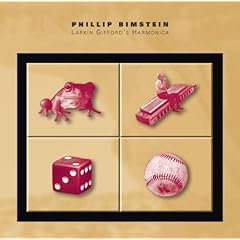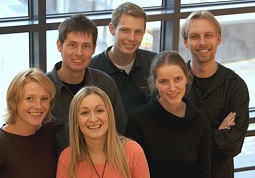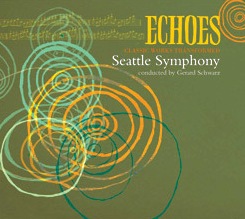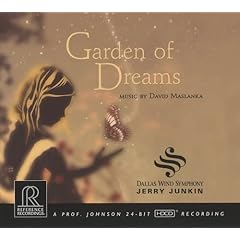 Any musical work which has a long. complex, and– dare I say it? –troubled history — can’t help but raise a red flag. Is the artist wrestling with something alive and kicking, or is he or she merely tinkering? Lou Harrsion’s “gay opera” Young Caesar, which began as a 1969 commission from the group Encounters, was first staged as a puppet opera for vocalists and 5 instrumentalists. A subsequent version, for 11 instrumentalists, onstage singers, and full chorus, followed, and this one, performed by the Portland Gay Men’s Chorus in 1988, was roundly criticized, though the performers, some of whom were “coming out” for the first time in it, embraced the work wholeheartedly. A further revised version for the Lincoln Center Festival, to be directed by Mark Morris, and conducted by Dennis Russell Davies, fell through Yet Harrison ( 1917- 2003 ) persisted — “I’m going to get that work right before I die ” — and French Canadian conductor Nicole Paiement, who premiered “the final cut”, or Urtext, if you will, in San Francisco in mid-February was an avid midwife in the process. But what are we to make of the final product? Was it worth the wait, or is it too little and too late? A little bit of both, but more of the latter.
Any musical work which has a long. complex, and– dare I say it? –troubled history — can’t help but raise a red flag. Is the artist wrestling with something alive and kicking, or is he or she merely tinkering? Lou Harrsion’s “gay opera” Young Caesar, which began as a 1969 commission from the group Encounters, was first staged as a puppet opera for vocalists and 5 instrumentalists. A subsequent version, for 11 instrumentalists, onstage singers, and full chorus, followed, and this one, performed by the Portland Gay Men’s Chorus in 1988, was roundly criticized, though the performers, some of whom were “coming out” for the first time in it, embraced the work wholeheartedly. A further revised version for the Lincoln Center Festival, to be directed by Mark Morris, and conducted by Dennis Russell Davies, fell through Yet Harrison ( 1917- 2003 ) persisted — “I’m going to get that work right before I die ” — and French Canadian conductor Nicole Paiement, who premiered “the final cut”, or Urtext, if you will, in San Francisco in mid-February was an avid midwife in the process. But what are we to make of the final product? Was it worth the wait, or is it too little and too late? A little bit of both, but more of the latter.
What went wrong? Well, judged from what saw or didn’t see — timidity on all sides, as well as narration, recitatives, and spoken texts ad infinitum, which made it sound like a largely 2 hour 41 minute lecture instead of a live theatrical event, which is incredible given the fact that Young Caesar purports to show how the man who’d one day rule the world, started to become that person. But Robert Gordon’s book fails to deliver the goods, and if the spine of a piece isn’t strong how can it stand up and move, and if the subject, forget style, doesn’t catch fire, all the revisions in the world amount to nothing but window dressing. That’s sad because Harrison has been the important, influential — on Paul Dresher and many others — and sometimes great composer of pieces like Mass to St. Anthony (1939), Varied Trio (1987), Piano Concerto with Selected Orchestra (1985), and the groundbreaking, with Cage, Double Music (1941).
But Harrison’s instrumental writing here for a 17 member pit band, including 5 percussionists, failed to drive the piece forward. Sure, you could argue that this composer isn’t interested in verismo melodramatics, and that he’s all for an Asian-inflected timelessness, and you’de be right, but the music as music, and the drama as drama, failed to hold the attention.
And so we’re stuck with a talky “drama” which covers the coming of age ceremony at 16 of Caesar (tenor Eleazar Rodriguez), the political machinations of his Aunt Julia (mezzo Wendy Hillhouse), his departure for Bithynia — a kingdom bordering the Black Sea in what’s now Turkey — to get ships for General Themus (baritone William O’Neill ), where he meets King Nicomedes IV, Philopater (baritone Eugene Brancoveanu ), has his first and possibly only gay affair — historians, though not Gordon are divided on this — and departs for Rome at age 19, a changed man, poised to conquer the world. But we didn’t see, much less feel that here in director Brian Staufenbiel’s version. Instead we saw a Caesar in an unbecoming white tunic — the ugly, baldly amateurish costumes were by Richard Battle — a Nicomedes who looked like Virginia Mayo’s Helena in Victor Saville’s pic The Silver Chalice ( 1954 ), and a drag queen, outfitted in a rosy mesh top; a black-robed chorus, who held white masks like lorgnettes — was this supposed to be camp ? — and a Julia with a Bette Midler corona of shocking red republican curls.
The whole production played like an uneasy mix of the amateur and the thoroughly professional. The only real winners here were Branconveanu, who despite the cards being stacked against him, managed to negotiate his part’s high tessitura with skill and point, and project a stage presence which overpowered Rodriguez’s adequately sung though barely stage present one — perhaps his character’s supposed to be ” a work in progress” ? — Hillhouse’s amusing Julia, Ensemble Parallele’s 19-member male chorus, and Paiement’s expert orchestra, especially in the second act overture. Strong solo turns were delivered by Yvonne Fong Lai on tack piano and celesta, Jennifer Cass on harp, Katie Rife on marimba, Graeme Jennings, violin, and Katrina Weeks, viola. But the erotic charge this piece should have had was largely missng — Caesar and Nicomedes’ bedding looked accidental and no fun despite a glaring scarlet sheet — though a white thong dance between Lawrence Pech and Peter Brandenhoff — and a still as marble pose by Peter Brandenhoff who seemed the very embodient of Apollo struck paydirt. I’m sure the 1st century BCE was more interesting than what we got here.
Even Mankiewicz’s much maligned, Cleopatra (1963), despite its second half longueurs, is a lot more fun, and in every way more probing, even profound — the phenomenal score’s by Alex North. Would that Young Caesar’s book, conception, and yes, music, ascended, even briefly, to its genuine heights.
Ensemble Parallle will perform Young Caesar again, on April 3rd, 2007 at The UCSC Recital Hall, University of California, Santa Cruz. ph. 831.459.2159. http://events.ucsc.edu.tickets/.
 Let’s go to the old mailbag and see what’s happening in the exciting world of new music. Ah, here’s something. Our friends at the American Music Center are launching
Let’s go to the old mailbag and see what’s happening in the exciting world of new music. Ah, here’s something. Our friends at the American Music Center are launching  Props to our amigo Tom Steenland who has been producing great avant-garde recordings on his Starkland label from Boulder for many years now. It isn’t every day that a CD from a small label makes the New York Times but Phillip Bimstein’s
Props to our amigo Tom Steenland who has been producing great avant-garde recordings on his Starkland label from Boulder for many years now. It isn’t every day that a CD from a small label makes the New York Times but Phillip Bimstein’s  Beth Anderson
Beth Anderson Claus is another composer I ran into on Myspace, and we’ve been corresponding for a few months now. Gahrn began his musical studies as a classical guitarist; from 2001 he studied composition and electroacoustic music at the Academy of Music in Esbjerg, Denmark, earning his MA degree with distinction in 2006. That’s Claus on the right in the photo, with his own young ensemble (including his pianist wife Malwina). There are links above that will take you both to Claus’ personal site, as well as that of the ensemble itself. Under “Media” at either, you’ll find excellent MP3 recordings and performances of Gahrn’s often-introspective yet just-as-often-edgy work.
Claus is another composer I ran into on Myspace, and we’ve been corresponding for a few months now. Gahrn began his musical studies as a classical guitarist; from 2001 he studied composition and electroacoustic music at the Academy of Music in Esbjerg, Denmark, earning his MA degree with distinction in 2006. That’s Claus on the right in the photo, with his own young ensemble (including his pianist wife Malwina). There are links above that will take you both to Claus’ personal site, as well as that of the ensemble itself. Under “Media” at either, you’ll find excellent MP3 recordings and performances of Gahrn’s often-introspective yet just-as-often-edgy work. Columbia University’s School of the Arts has given
Columbia University’s School of the Arts has given  Out my (Seattle) way, local composer and Seattle Weekly columnist Gavin Borchert this week offered up something titled “
Out my (Seattle) way, local composer and Seattle Weekly columnist Gavin Borchert this week offered up something titled “
 Garden of Dreams
Garden of Dreams Lion’s Eye/Lion’s Tale
Lion’s Eye/Lion’s Tale tic
tic